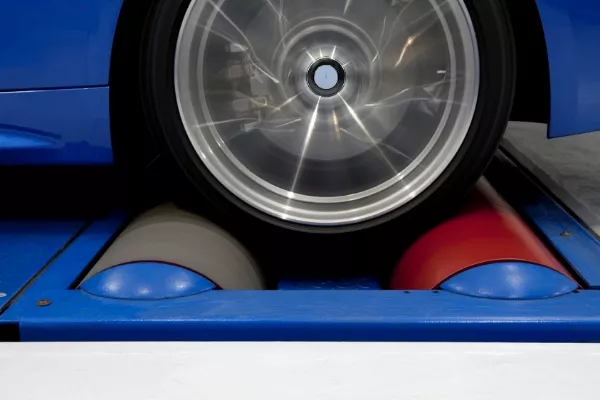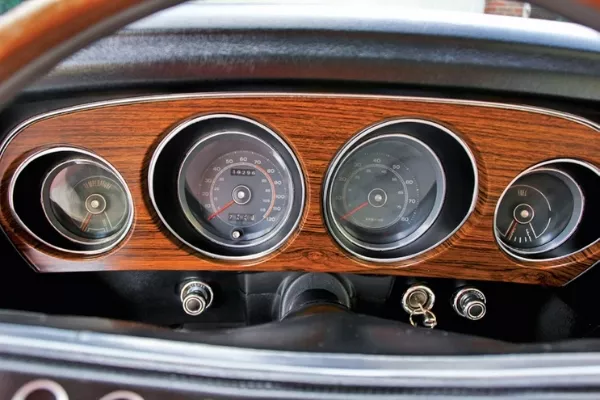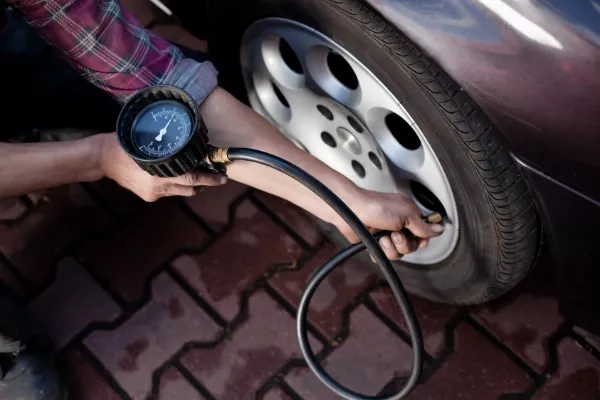Ever wonder why some countries use miles to measure distance while we use kilometers? Well, that is because there are two systems of measurement – the metric system and the U.S. customary units.
In a metric system, the meter is used to measure distance, the liter is used to measure volume, and gram is used to measure mass.
On the other hand, U.S. customary units use mile to measure distance, gallon to measure volume and pound to measure mass. However, we will be focusing only on the metric system since this is used here in the Philippines.
It is important to understand the different measurements in your car because it can help you monitor the condition of your car and know what is needed to fix a certain problem.
With that being said, here are five units of measurement used in your car. Let's check out with Philkotse.com.
1. Car unit of measurement: Torque (Newton Meter)
Torque can be measured by multiplying force and distance. Let’s say you have a 2-meter wrench and you applied 1 newton of force to a bolt, that means that you have 2 Nm of torque applied after multiplying its distance of 2 meters and its force of 1 newton.
In other words, applying 2 newtons of force to a bolt using a 1-meter wrench, you basically have the same amount of torque.

Did you know that electric cars accelerate faster than internal combustion cars because torque is instantly applied to the wheels
In an engine, every downstroke of a piston form an expansion of gas due to combustion produces force. To find the torque, we need distance – and it can be found on the distance between the attached pin of a piston to its center axis on a crankshaft. Multiply force and distance, and you get the torque.
You might notice that diesel engines tend to have higher torque than gasoline engines. Here is a short explanation of that mechanical concept.
Diesel engines have a higher compression ratio than those of a gasoline engine. The compression ratio is defined as the ratio of the volume of the cylinder when the piston is at its bottom dead center position and volume of the cylinder when the piston is at its top dead center position.
In short, the higher the compression ratio, the longer the piston has to travel to complete one cycle. The longer a piston travels, the higher its distance value. The higher the distance, the higher its torque will be when multiplied to the force produced.
Another reason why diesel engines have higher torque is that it uses, obviously, diesel fuel. The energy density of diesel fuel is higher than a gasoline fuel, which means that once diesel is combusted in a cylinder, it produces more force. The higher the force in a given distance, the higher its torque value.
>>> Related: Everything you need to know about torque
2. Power (Horsepower)
Horsepower can be something we know but really don’t understand. This car unit of measurement has been a common reference for many people when determining how fast a car can go. They are not wrong, however, there are still other factors to consider like weight and aerodynamics.
Horsepower is defined as a unit of power or the rate at which work is done. In other words, horsepower is how quickly you can accomplish work.
The common question asked is which car will run faster, the one with a higher horsepower or the one with a higher torque considering the two cars have the same weight.

This is how a dyno operates
>>> Related: A detailed explanation of car's BHP and Torque
The short answer is the car with higher horsepower. It can produce higher power which means it can accomplish work faster than the car with higher torque.
Did you know that one horsepower doesn’t equate to the power one horse can produce? Actually, one horse has the power of approximately 13 hp. So why is it called horsepower anyway?
James Watt noticed that a horse took a minute to lift 330 lbs (149.7 kg) of coal out of 100 foot (30 meters) well. Which means that 100 ft. x 330 lbs / 1 min is equal to one horsepower.
Horsepower can be measured on a dynamometer. Dynamometer or dyno is a device that uses a roller that measures how much force is produced on the wheels.
You can’t however directly measure horsepower in a dynamometer. To find your horsepower, you have to multiply torque to the constant 5,252 and divide it by your engine rpm.
3. Speed (km/h)
Speed is defined as the rate at which something is able to move. It is measured by kilometers per hour in the metric system and miles per hour in the U.S. customary unit. We can determine the speed of a car by dividing the distance it traveled by the time it took for the car to reach its destination.
Let’s say a car traveled 100 kilometers in 2 hours. To determine its speed, we have to divide 100 km by 2 hours, and we get 50 km/h. Increasing the time the car took to reach its 100-km destination would lead to a slower speed.
We can monitor the speed of the car we are driving by the use of a speedometer. Modern cars use digital car's meters and gauges for more accurate readings and advanced aesthetics.

1969 Ford Mustang Analog Gauge Cluster | via Hemmings Motor News
Quick trivia: Did you know that in Germany, the country has a federal controlled-access highway called Autobahn? It is a 12,996 km highway that is known to have no speed limit.
Although there are imposed at 130 km/h at some parts of the highway, which is already over the legal speed limits in the Philippines, people still push their cars to the limit. If safety is an issue, research suggests that the Autobahn experiences fewer vehicle-related fatalities than the U.S.
4. Temperature (Degrees Celsius)
A car uses fuel to run, the fuel then combusts – resulting in high temperature in your engine. This is why it is also important to understand what temperature is and how vital it is in dealing with your car.
Since we are using the metric system, degrees Celsius is our car unit of measurement for temperature. For the conversion, 1 degree Celsius is equal to 33.8 degrees Fahrenheit.

Common reasons for overheating are low engine coolant level, water pump failure, and clog in the coolant system
On average, an engine temperature ranges from 90 to 104 degrees Celsius. You can monitor the temperature of your car using the temperature gauge usually found within the instrument cluster.
The ideal position of your temperature gauge needle is at the center outside the red zone. If your engine exceeds its ideal operating temperature, you better shut your engine off and get it checked as soon as possible.
5. Car unit of measurement: Pressure (psi)
Here in the Philippines, we use both kPa (kilopascal) and psi (pound-force per s.quare inch) but we got used to monitoring pressure using psi.
The pressure is defined as the continuous physical force exerted on or against an object. For conversion, 1 psi is equal to 6.89 kPa.

Tire pressure gauges can really be handy at all times
Pressure and temperature are the two common factors for an equipment failure – that’s why it is important to understand what the pressure limit of your car is. For tire pressure, check out your vehicle tire pressure sticker or placard.
It can either be found on your car’s door jam, trunk lid, fuel door, or console. If you are a fan of a turbo, expect extreme pressure spooling up in your engine. It is then recommended to install pressure gauges. Plus, it adds a sporty touch in your interior.
>>> Related: Tire pressure monitoring system - This is how you know and install it
Recent posts
- Help...! My gauges are not working and what should I do now? Oct 20, 2021
- Different types of tire pressure gauges and which is the best to choose? Jan 08, 2021
- 3 things you need to know about car speed sensor Aug 09, 2022
- Torque and horsepower: What is the difference? Dec 15, 2020
- 7 components to tune up car engine for maximum horsepower & torque Dec 15, 2020












